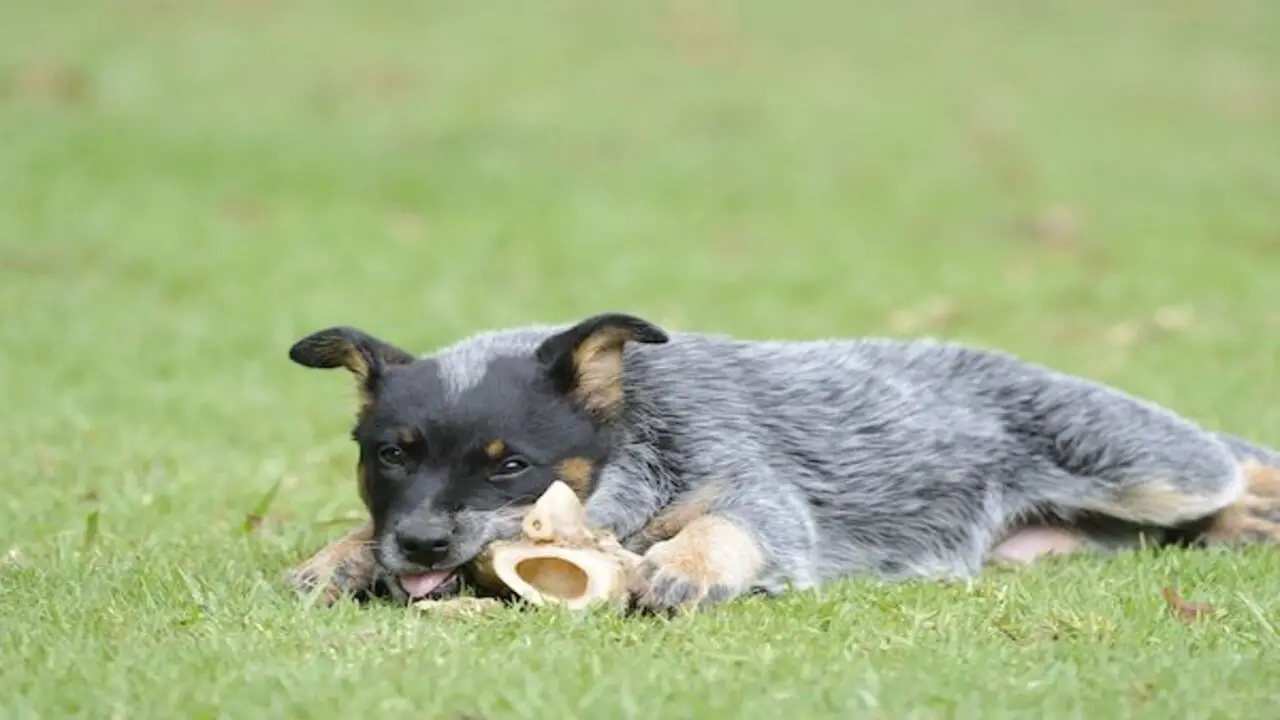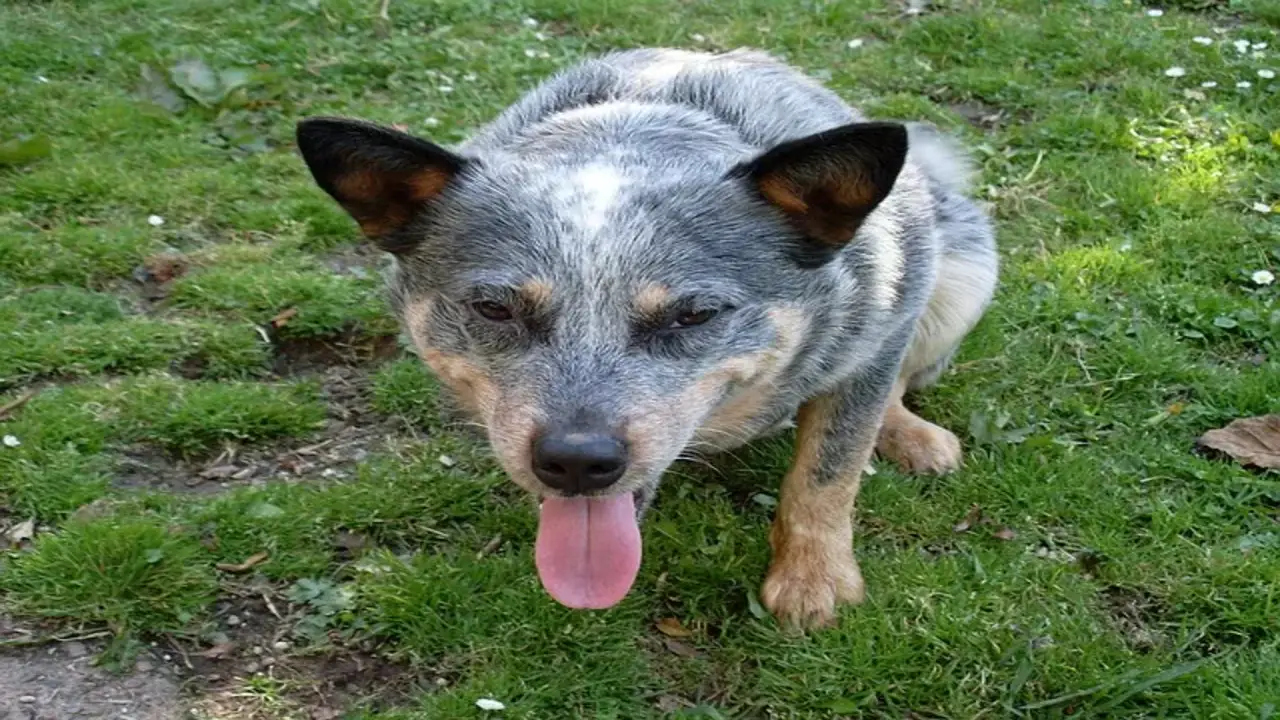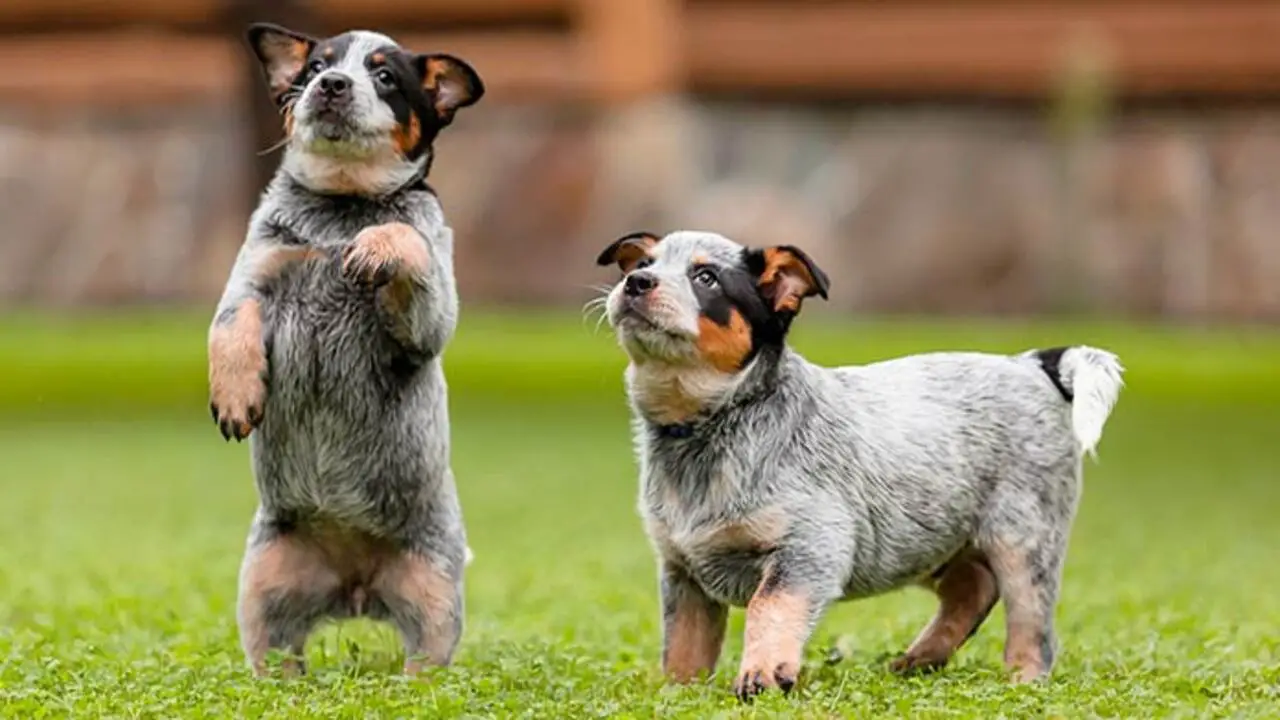Blue Heelers, or Australian Cattle Dogs, are widely recognized for their intelligence and loyalty. They have been bred to work hard and are known for their stamina and endurance.
With their strong work ethic and high energy levels, many wonder if Blue Heelers can be inside dogs. Keeping a Blue Heeler as an inside dog is possible, but it requires proper training, socialization, and exercise. We will explore the various aspects of raising a Blue Heeler as an inside dog, including their temperament, exercise needs, and training requirements.
Can Blue Heelers be inside dogs? We will also discuss the challenges of keeping a high-energy breed like the Blue Heeler indoors and offer tips and advice on managing them. Whether you’re considering getting a Blue Heeler as a pet or already have one and are struggling to keep them inside.

Can Blue Heelers Be Inside Dogs? What You Need To Know

Can Blue Heelers be inside dogs? Blue Heelers, or Australian Cattle Dogs, can be inside dogs. However, there are important considerations to remember before bringing a Blue Heeler into your home. Blue Heelers are highly active and intelligent dogs that require plenty of mental and physical stimulation. They have a strong herding instinct and may try to herd family members or other pets in the household. Additionally, they have a lot of energy and need daily exercise to prevent boredom and destructive behavior. Providing them with a consistent routine, plenty of exercise, and mental stimulation through training and puzzle toys can help ensure they are happy and well-behaved indoor companions. It is also important to note that Blue Heelers thrive in homes with experienced dog owners who can provide them with the structure and guidance they need.
Assessing The Indoor Suitability Of Blue Heelers

Blue Heelers, also known as Australian Cattle Dogs, are active and high-energy dogs. They thrive in homes with ample space and opportunities for exercise. Training and interactive toys can fulfil their intelligence and need for mental stimulation. While Blue Heelers are generally loyal and protective, proper socialization is crucial to ensure they get along well with other pets and children. However, they may exhibit nipping or herding without proper training and socialization.
While Blue Heelers can adapt to living indoors, it’s important to provide regular exercise and mental stimulation to prevent boredom and destructive behaviors. These intelligent dogs can become restless and engage in mischief without adequate physical and mental exercise. They require mental stimulation through puzzle toys, obedience training, and agility exercises. Establishing a routine that includes regular walks, play sessions, and opportunities for off-leash running in a safe environment like a dog park is essential.
How Well Do Blue Heelers Adapt To Indoor Environments?
Blue Heelers are adaptable to indoor environments if they receive adequate mental and physical stimulation. This active breed requires regular exercise and mental enrichment, which can be provided through interactive toys, puzzle games, and training sessions. However, it’s important to remember that they still need outdoor time for exercise and stimulation.
The Importance Of Exercise For Blue Heelers
Blue Heelers, also known as Australian Cattle Dogs, are known for their high energy levels and need for regular exercise. This is essential for maintaining their physical and mental well-being. Blue Heelers can develop behavioral problems such as excessive barking, destructive chewing, and aggression without sufficient exercise. Providing them with daily exercise that includes both physical activity and mental stimulation is crucial to prevent these issues.
Physical activities like walks or runs help burn off excess energy, while mental stimulation through training or puzzle toys keeps their minds engaged. Blue Heelers excel in activities like obedience training, agility, and herding trials, which provide exercise and challenge their intelligence. When designing an exercise routine for a Blue Heeler, it is important to consider factors such as the dog’s age, health, and energy levels. It’s always advisable to consult with a veterinarian for any specific limitations or restrictions.
How Much Exercise Does A Blue Heeler Need When Kept Indoors?

When considering keeping a Blue Heeler as an indoor dog, it is important to understand their exercise needs. Blue Heelers are highly energetic and intelligent dogs that require plenty of physical and mental stimulation. They will still need regular exercise indoors to prevent boredom and behavioral issues. A daily walk or two, playtime, and interactive toys can help meet their exercise needs. Additionally, obedience training or agility can mentally stimulate these active dogs. It is important to balance providing enough exercise for your Blue Heeler while respecting the limitations of indoor living.
Training Tips For Keeping Blue Heelers Indoors
Start your Blue Heeler training early to establish boundaries and rules. Use positive reinforcement techniques to reward desired behaviors, such as sitting or staying. This will help your Blue Heeler understand what is expected of them and encourage good behavior. Providing mental and physical stimulation is crucial to prevent boredom and destructive behavior. Blue Heelers are a high-energy breed that requires plenty of exercise and mental challenges.
Consider incorporating activities like obedience training, puzzle toys, or agility exercises to keep them engaged and prevent restlessness. Crate training can create a safe space for your Blue Heeler when you’re not home, providing them a sense of security. Consistency is key in enforcing rules and maintaining a routine to avoid mixed messages. If you’re unsure about training strategies, hiring a professional trainer who specializes in working with Blue Heelers may be beneficial. They can provide additional guidance and support to ensure a successful indoor experience for you and your furry friend.
Does The Size Of Your Home Matter For An Indoor Blue Heeler?
When considering whether a Blue Heeler can be an inside dog, the size of your home does matter to some extent. Blue Heelers are active and intelligent dogs that require plenty of exercise and mental stimulation. While they can adapt to living in smaller spaces, providing enough room to move around and engage in their natural behaviors is important. A larger home or yard access would benefit a Blue Heeler, giving them more space to roam and play. However, even if you have a smaller home, you can still make it work by providing regular exercise and mental enrichment through activities like puzzle toys and training sessions. Ultimately, the most important factor is ensuring that your Blue Heeler’s physical and mental needs are met, regardless of the size of your home.
Can Blue Heelers Stay Alone Indoors?

While they can certainly be trained to stay alone indoors for short periods of time, it is important to consider their specific needs before leaving them alone for extended periods. Blue Heelers require plenty of exercise and mental stimulation, so providing them with enough physical activity and mental enrichment before leaving them alone is essential. Additionally, crate training can benefit Blue Heelers as it provides a safe and secure space for them while they are away. However, it is recommended to gradually increase the time they spend alone indoors and monitor their behavior to ensure they are comfortable and not experiencing separation anxiety.
Keeping Your Blue Heeler Happy And Healthy Indoors
Keeping your Blue Heeler happy and healthy indoors is essential for their well-being. Blue Heelers can adapt to indoor living if their exercise and mental stimulation needs are met. Providing plenty of physical exercise through daily walks, runs, or play sessions is crucial for these active dogs. Mental stimulation is equally important, so use puzzle toys, obedience training, and interactive games to keep your Blue Heeler engaged.
Creating a designated space for your Blue Heeler indoors with a comfortable bed and toys will help them feel secure and content. Establishing a consistent routine can also aid in their adjustment to indoor living. Monitor and manage their behavior to prevent any destructive habits from developing. Remember that Blue Heelers are highly intelligent and require mental stimulation and socialization to prevent boredom and potential behavioral issues.
Conclusion
Whether a Blue Heeler can be an inside dog depends on various factors such as their adaptability, exercise needs, and training. While Blue Heelers are known for their high energy levels and need for physical activity, they can still be kept indoors if their exercise needs are met through other means like mental stimulation and interactive play.
Training is also crucial to ensure they behave well indoors and do not become destructive or anxious when left alone. Creating a comfortable and stimulating environment for your Blue Heeler indoors is important, providing them with toys, puzzles, and enough mental and physical engagement. Blue Heelers can thrive as inside dogs with the right approach and care. We hope you now understand how can Blue Heelers be inside dogs.
Frequently Asked Questions
[rank_math_rich_snippet id=”s-eb7e5907-7d59-4e35-ae3f-74262bcea137″]